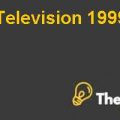
Answer 1
The cause and effect analysis is a technique used for total quality management to identify possible causes for a problem. A cause and effect diagram is a visual representation of possible causes and their effects on the overall procedure.
It is used to define a problem, identify data requirements; possible causes develop objectives for solutions and narrow down causes. The analysis can achieve solutions for vast and insoluble problems. The way to start it is by breaking down problems into narrower and smaller chunks which can be handled easily. Cause and effect diagram helps in a number of ways such as to generate ideas, to reveal undetected relationships and to highlight attention to important relationships. They are often called fishbone diagrams as they look like one. The head of the fish is the quality problem and the spine connects the head to possible causes of the problem which can be machines, workers, measurement, supplier or material or any other problem. . Each of those problems is then further connected to ones that they might be facing. (Naidu, et al., 2006)
The steps for it are as follows:
- Name the problem
- Draw a diagram
- Identify major possible causes
- Think for more cause
- Incubate ideas
- Evaluate and analyze
In the problem of Cranston Nissan, Mr. Jackson is facing a huge challenge and to solve the problem addressed to him by Sam Monahan is a difficult task. The management of the body shop has displayed terrible performance and customer complaints have piled up in a single letter. Problems identified by Mr. Monahan are reflecting poorly on the management and the performance. The development of the cause and effect diagram requires brainstorming for all causes of poor quality.
This case has a number of problems which the total quality manager has to evaluate. Possible causes for poor quality management are poor supervision, lack of proper training and many others.
Most common reasons in causing poor management of total quality management procedure are:
v Lack of support from the top management
v Lack of support from the middle management
v Lack of commitment from workers
v Short term commitment and failure to remain consistent in performance
v Haphazard working procedure
v Not having competent trainers for providing training
v Not having adequate or suitable success measuring tools
v Failure to motivate workers to input better performance
v Over-dependence on computerized quality control programs.
v Lack of funds to replace machinery, purchase improved raw materials and conduct trainings. (Besterfield, 1995)
Problems which are most common in terms of car services are that workers are not properly trained and supervised, they are not given enough motivation and incentives to perform better, no performance management system is implemented, they are expected to work in poor conditions, management is careless and customer services are not given high priority......................................
This is just a sample partial case solution. Please place the order on the website to order your own originally done case solution.













